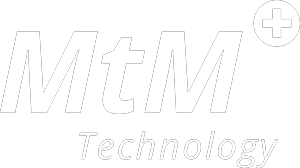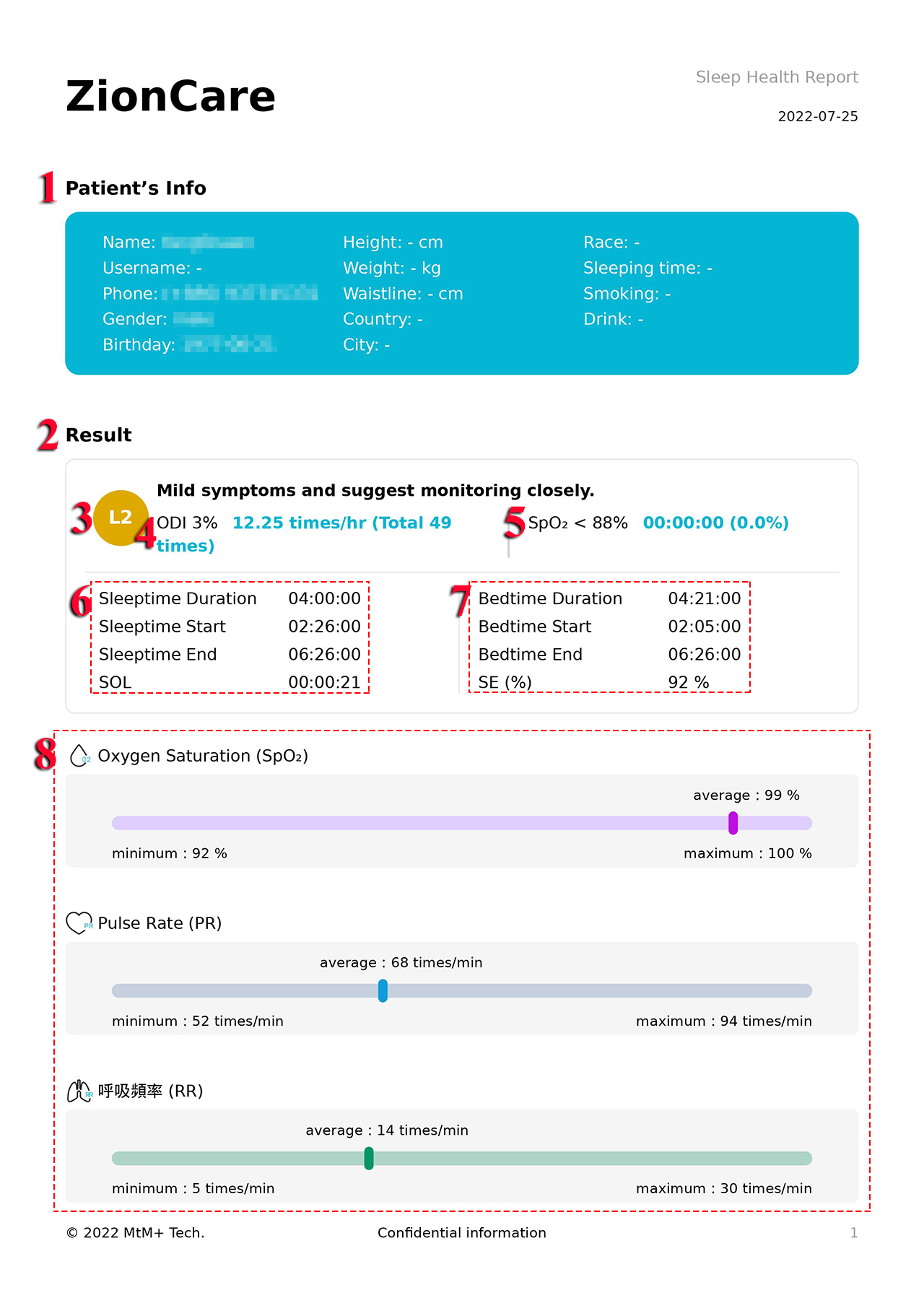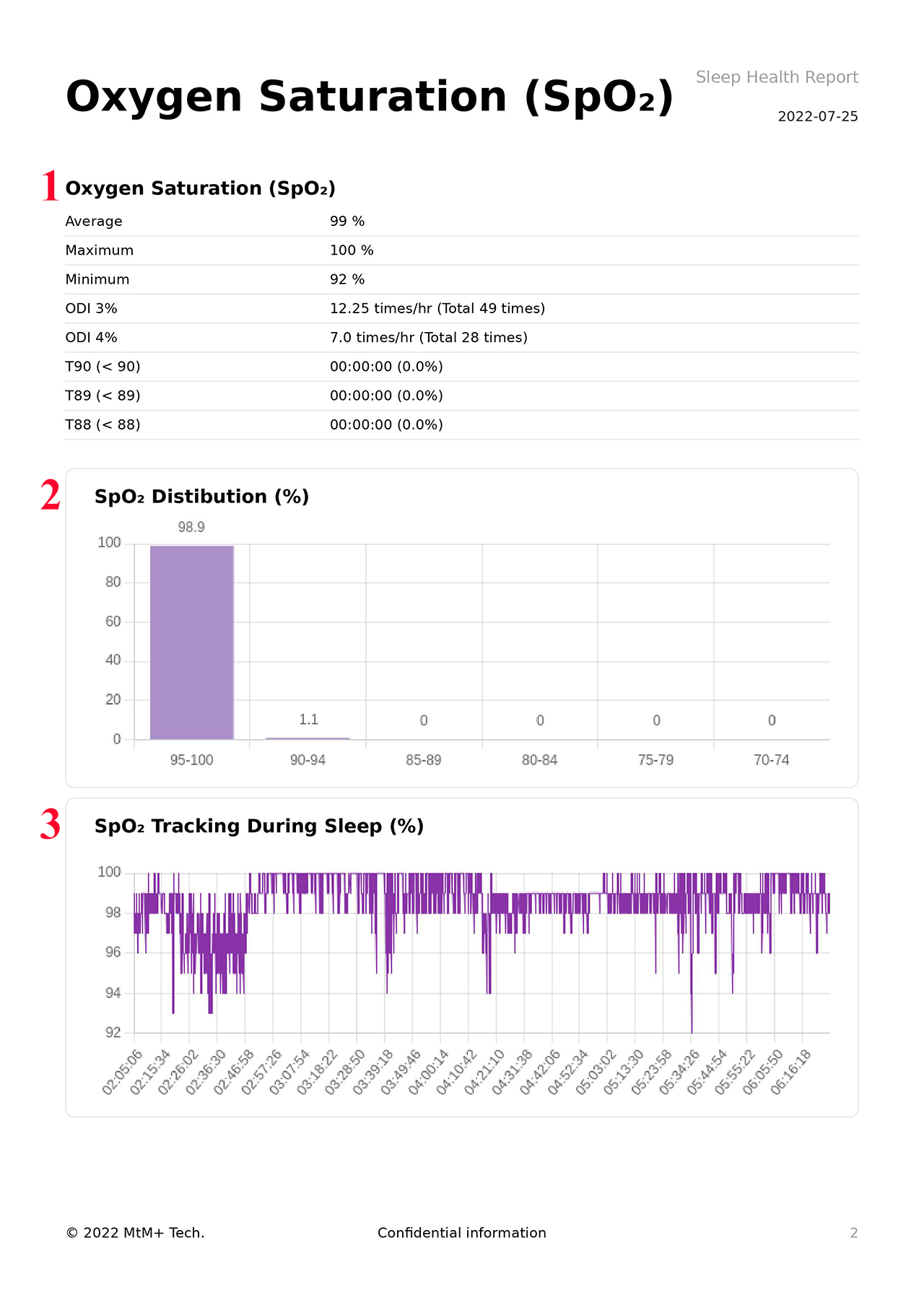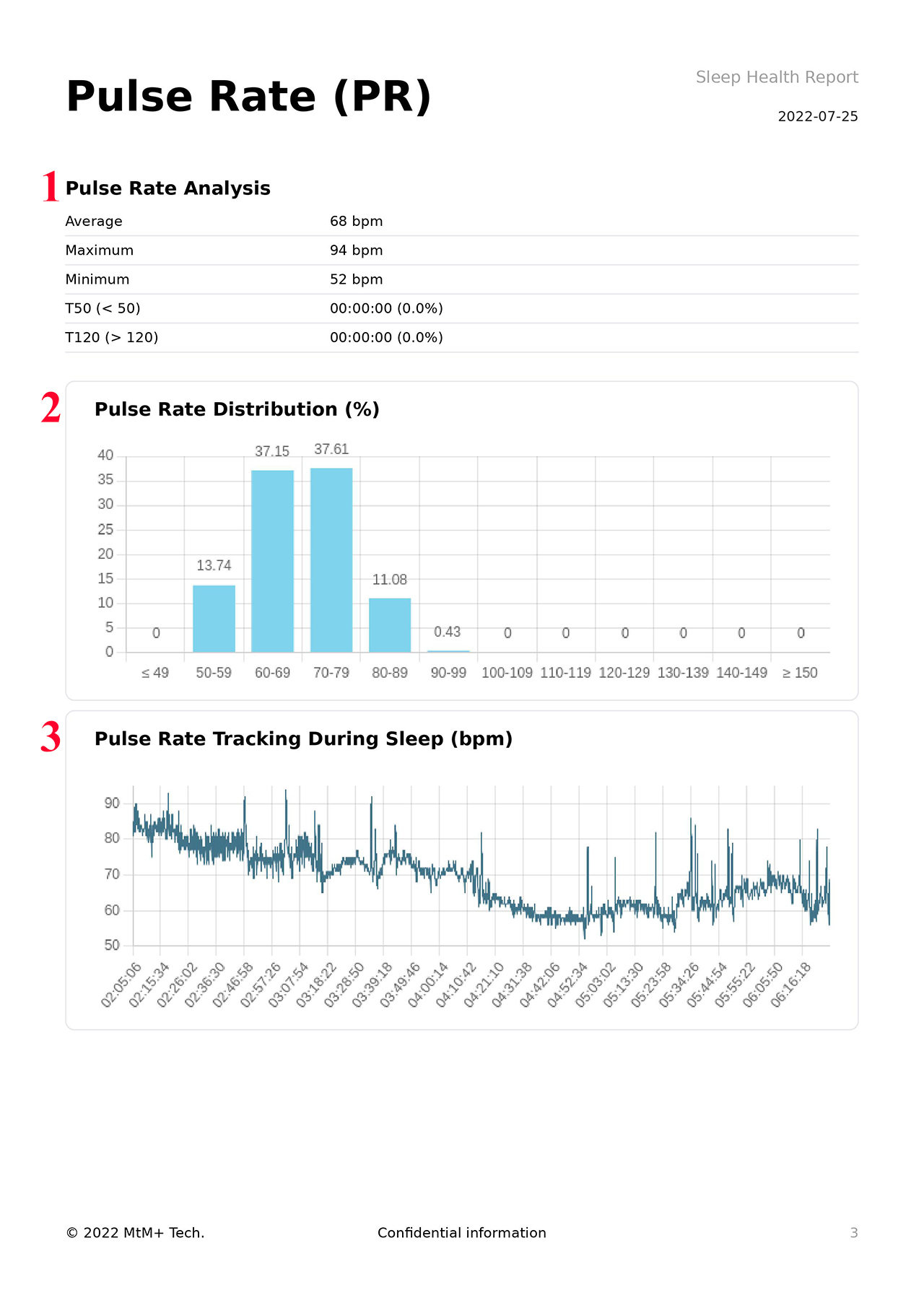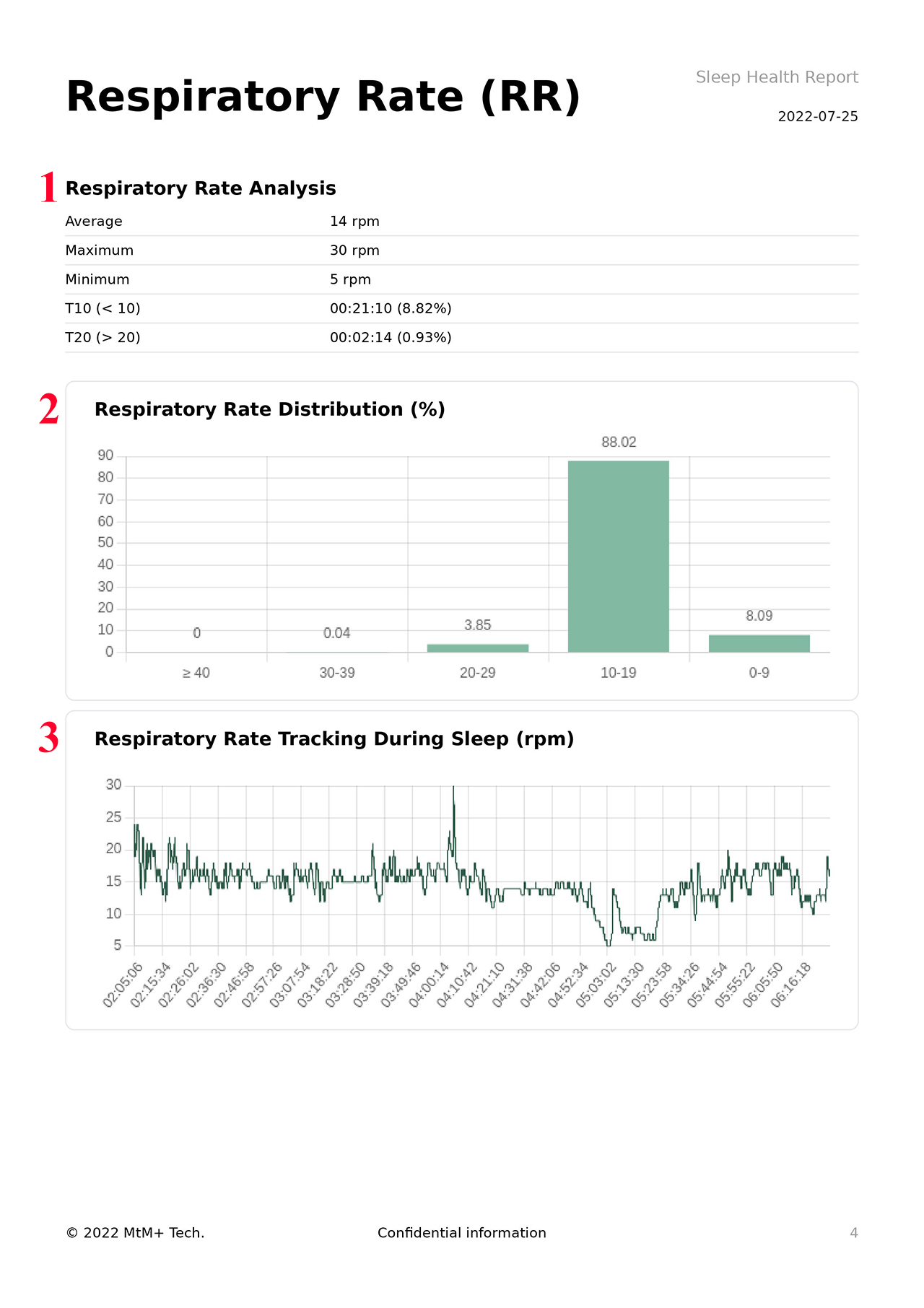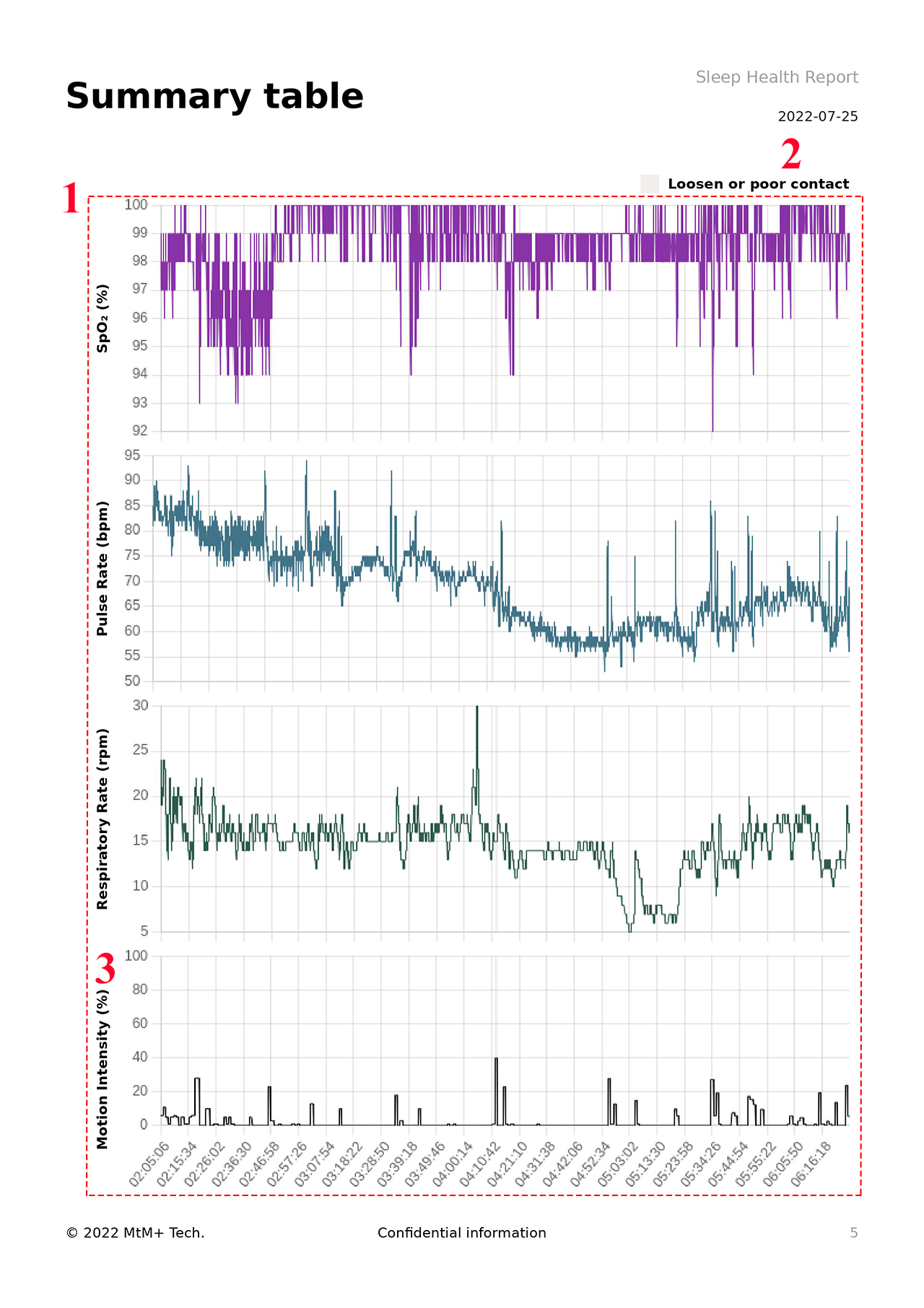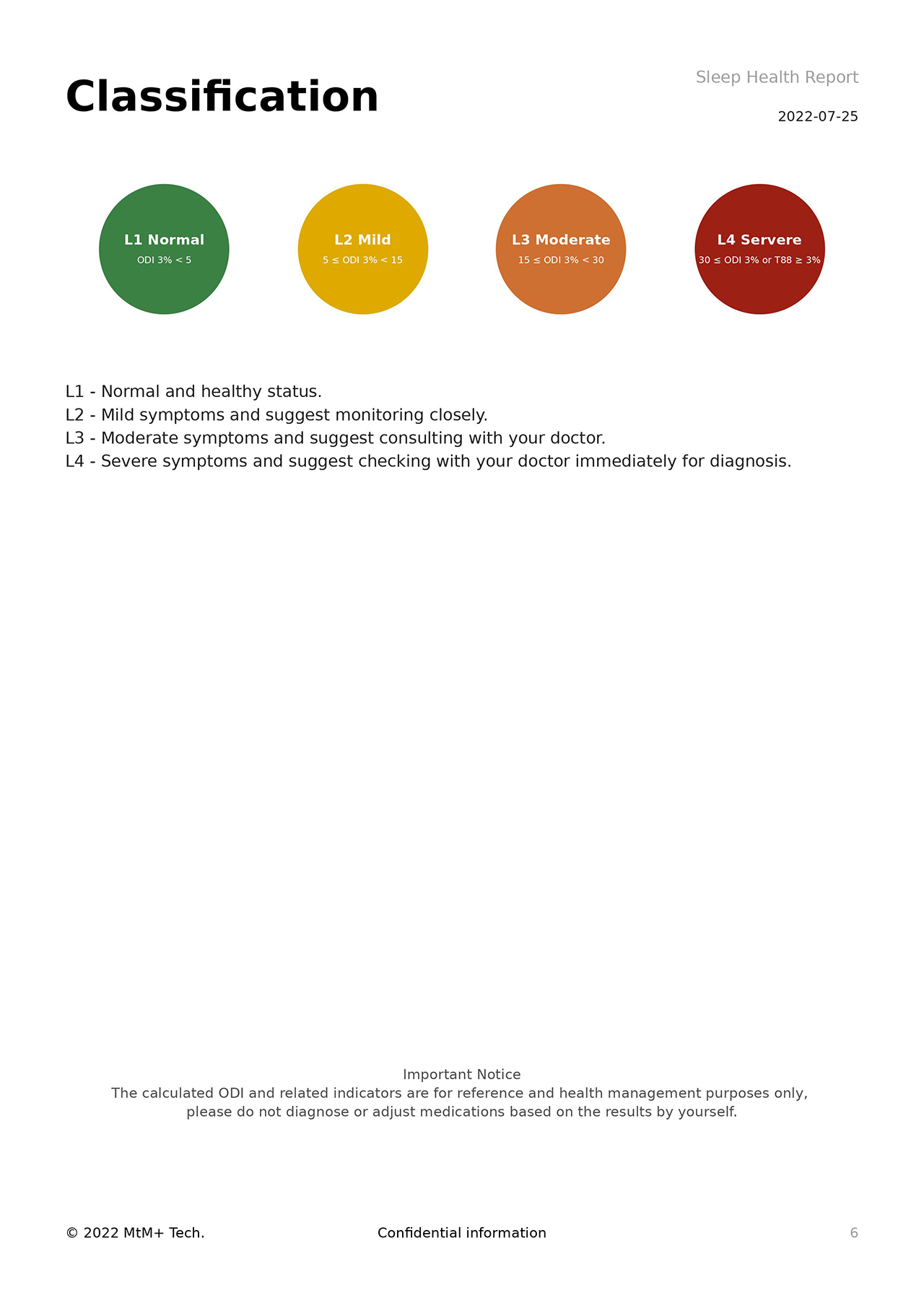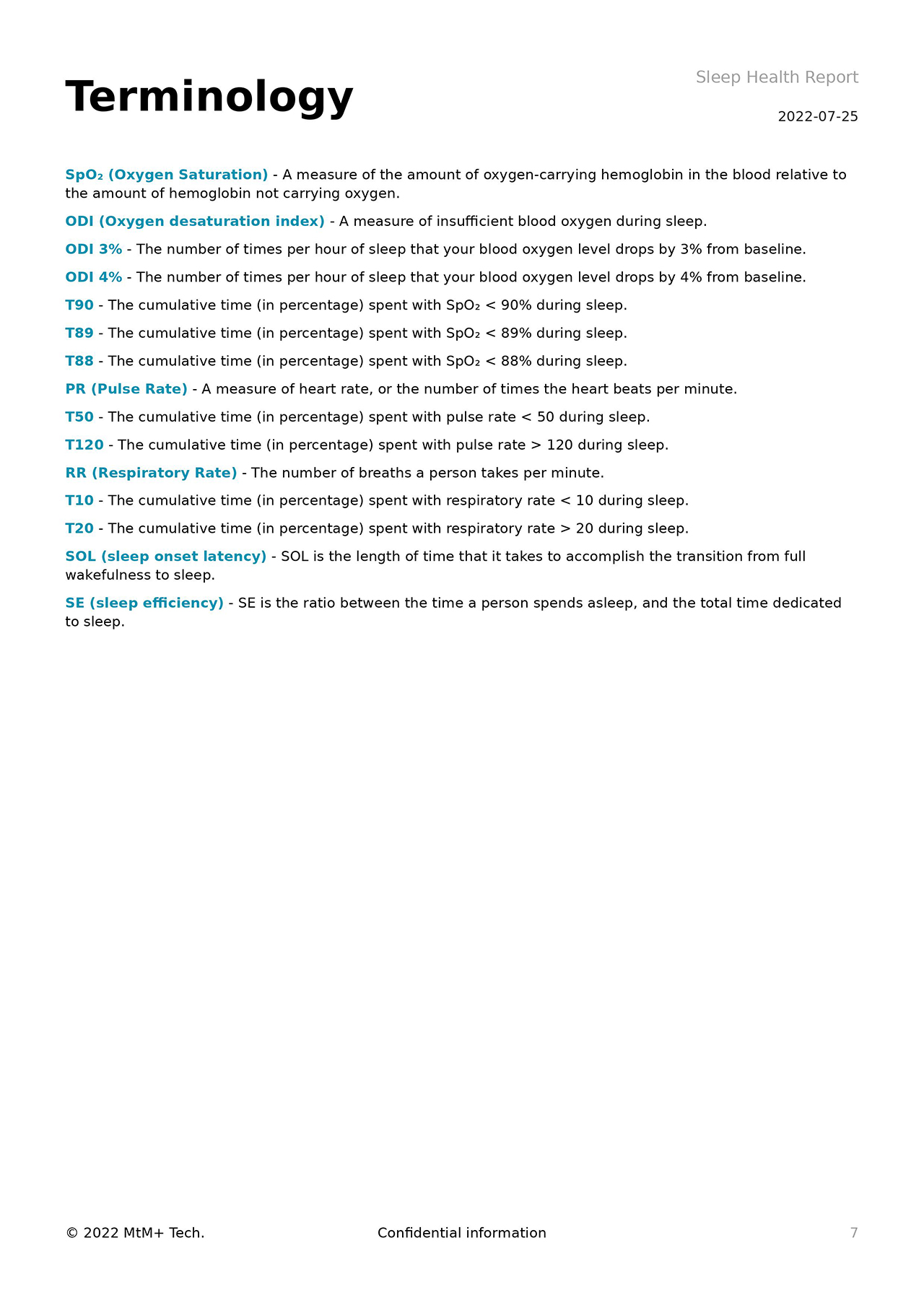Interpretation of sleep health report
在使用ZionCare穿戴裝置記錄睡眠後,隔日可透過APP獲得前一日的睡眠健康報告,一共六頁,您可以透過解讀來洞悉報告呈現的睡眠狀態,也可以善用ZionCare的睡眠健康檢測方案來諮詢報告內容。
Page 1 of Sleep Health Report
- The basic information that the user fills in when registering an account.
- The data and analysis covered in this sleep health report, and in order to conform to the sleeping habits of the general public, we have changed the day at 12:00 noon to distinguish the daily sleep health report.
- If the sleep time is earlier than 12:00 noon, it will be regarded as the sleep record of the previous day, otherwise it will be the sleep record of the day.
- When there are multiple sleep records on the same day and the interval exceeds 1 hour, the data with the longest sleep time will be automatically screened as the main sleep record of the day.
- If the interval between multiple sleep records is less than 1 hour, ZionCare's algorithm will treat it as continuous sleep and combine the sleep records for analysis.
- In order to improve the accuracy of sleep data analysis, the minimum analysis time required for data reported by daily sleep records is 2 hours. Sleep less than 2 hours will be regarded as invalid data and will not be counted.
- The ZionCare wearable device will judge whether you are in a sleep state based on your activity intensity and heart rate. Some behaviors during sleep, such as getting up, dreaming, muscle twitching, etc., may all be reflected in the sleep data. ZionCare's sleep health detection solution We can provide professional report interpretation for you.
- You can participate in ZionCare's sleep health detection program for multi-day observation, and then increase the sample to confirm the actual sleep rating.
- ODI 3% is the number of times the blood oxygen concentration drops by 3% per hour, and it is also the number of times breathing disorders occur per hour. It is one of the important indicators for judging sleep status. Some institutions also use 4% for judgment.
- SpO2 is blood oxygen saturation or blood oxygen concentration. Under normal conditions, the body needs to maintain a certain level in order to effectively perform physical functions. Less than 88% is an indicator to judge whether you are in hypoxia. This data can show your hypoxia during sleep. Time percentage, some institutions will also use indicators such as 89% and 90% to judge.
- This area is the total sleep time. ZionCare will determine the time to start and end sleep through the data, and the sleep latency is the length of time from fully awake to sleep.
- This area is the time when your ZionCare wearable was activated, which can be understood as the timestamp of when the recording started and ended, and the sleep efficiency is the ratio between the time you fell asleep and the total time spent sleeping.
- This section is a visual diagram of the blood oxygen concentration, pulse rate and respiratory rate during this sleep. You can quickly understand the minimum, maximum and average values from the corresponding pictures.
Page 2 of Sleep Health Report
- This page provides a detailed explanation of the blood oxygen concentration, including indicators that are often referenced by various institutions, such as the number of drops in blood oxygen concentration per hour (ODI) 3%, 4%, and the percentage of time for blood oxygen concentration (SpO2) to drop, and T88 represents the blood oxygen concentration. The percentage of time when the oxygen concentration is less than 88%. Similarly, T89 and T90 indicate different numerical indicators.
- This area is the detailed time percentage distribution of blood oxygen concentration, and you can understand sleep hypoxia from another angle based on the distribution map.
- This area is the raw data actually recorded by the ZionCare wearable device, and you can use this graph to understand the blood oxygen changes during sleep.
Page 3 of Sleep Health Report
- This page explains the pulse rate in detail. Except for the minimum value, maximum value and average value, T50 indicates the time ratio when the pulse rate is less than 50 times, and T120 indicates the time ratio when the pulse rate is greater than 120 times.
- This area is the time percentage distribution of the pulse rate, and you can understand the number of sleep pulses from another angle based on the distribution map.
- This area is the raw data actually recorded by the ZionCare wearable device, and you can understand the pulse changes during sleep through this graph.
Page 4 of Sleep Health Report
- This page explains the respiratory rate in detail. Except for the minimum value, maximum value and average value, T10 represents the time ratio of the respiratory rate less than 10 times, and T20 is the time ratio of the respiratory rate greater than 20 times.
- This area is the time percentage distribution of breathing frequency, and you can learn about the number of sleep breathing from another angle based on the distribution graph.
- This area is the raw data actually recorded by the ZionCare wearable device, and you can understand the breathing changes during sleep through this graph.
Page 5 of Sleep Health Report
- This page is the conclusion of the visual chart of this sleep health report. In addition to the blood oxygen concentration (SpO2), pulse rate (bpm) and respiratory rate (rpm) mentioned repeatedly, the raw data of the exercise intensity schedule is also added. judge.
- The gray part indicates that the data may be incorrect due to various factors such as looseness or poor contact at the moment of wearing. You can use this to filter the effective data to improve the accuracy of the report.
- Movement intensity indicates the frequency of your movements per minute to estimate your sleep state. However, some physiological data (such as pulse rate) may be affected by intensive movements and may cause errors.
Page 6 of Sleep Health Report
Sleeping blood oxygen concentration classification is based on ODI 3% (the percentage of time when blood oxygen concentration drops by 3%) and T88 (the percentage of time when blood oxygen concentration is less than 88%). It is recommended to perform multi-night tracking or seek professional physician consultation. You can also make good use of ZionCare's sleep hypoxia detection solution to parse the report.
Page 7 of Sleep Health Report
This page is a detailed explanation of the proper nouns of the sleep health report. You can Contact us to learn more or refer to ZionCare Sleep knowledge.
